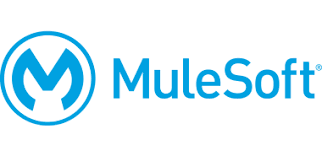MuleSoft provides services for building application networks on its integration platform, connecting various systems, applications, and data sources. The primary purpose of MuleSoft is to link cloud-based systems, on-premise software, legacy databases, and third-party applications via APIs (Application Programming Interfaces). MuleSoft offers a versatile network that integrates applications based on their APIs, allowing developers and IT teams to design, implement, test, and govern APIs across the enterprise.
What is MuleSoft?
MuleSoft is an integration platform that enables businesses to connect applications, data, and devices across cloud and on-premise environments using APIs. It allows companies to streamline operations by automating workflows, managing APIs, and improving data exchange between disparate systems. Owned by Salesforce, MuleSoft plays a critical role in digital transformation by facilitating the seamless integration of legacy systems and modern cloud-based applications. With its Anypoint Platform, MuleSoft helps businesses improve agility, operational efficiency, and customer experience through enhanced data connectivity and automation.

What Does MuleSoft Do?
MuleSoft is used to:
- Connect Applications and Data: MuleSoft links various systems and data sources, simplifying processes by eliminating silos.
- Automate Workflows: By connecting systems with APIs, MuleSoft automates workflows to increase efficiency and reduce manual intervention.
- API Management: MuleSoft offers tools to design, secure, and manage APIs, ensuring efficient and secure communication between systems.
- Improve Customer Interactions: MuleSoft enhances customer experience by enabling smooth integration between customer-facing tools such as CRM and e-commerce platforms.
Who Owns MuleSoft?
MuleSoft was founded in 2006 by Ross Mason. In 2018, Salesforce acquired MuleSoft for $6.5 billion. MuleSoft’s integration platform, Anypoint Platform, is now a critical component of Salesforce’s Customer 360 strategy, which allows businesses to gain a holistic view of their customers by connecting different data sources across the enterprise.
Is MuleSoft Owned by Salesforce?
Yes, MuleSoft is owned by Salesforce. The acquisition has allowed Salesforce to enhance its integration capabilities, making it easier for businesses to connect Salesforce products with other enterprise systems and third-party applications. MuleSoft plays a key role in Salesforce’s Customer 360 platform, providing seamless integration to offer businesses a comprehensive view of their customers.
Key Benefits of MuleSoft
| Benefit | Description |
|---|---|
| Increased Agility | MuleSoft’s API-led approach enables businesses to quickly adapt to new requirements by building reusable integrations. |
| Operational Efficiency | By automating workflows and standardizing APIs between systems, MuleSoft enhances IT efficiency and business operations. |
| Cost Reduction | MuleSoft reduces integration costs by eliminating custom code and offering scalable API management tools. |
| Improved Customer Experience | MuleSoft integrates customer-facing applications, delivering a seamless experience across multiple touchpoints. |
| Better Data Insights | MuleSoft integrates applications and data sources to provide a 360-degree view of data, enabling better decision-making. |
MuleSoft Integration and Automation
MuleSoft is widely known for its robust integration and automation capabilities. It helps businesses connect multiple systems, including legacy applications and cloud-based services, to ensure smooth data flow and operational efficiency.
MuleSoft Integration 101
- Connectors: Pre-built tools to easily connect different systems, whether they are cloud-based or on-premise.
- Templates: Pre-configured templates that simplify and speed up the deployment of integration solutions.
- API Manager: Design, secure, and manage APIs to ensure data sharing between systems is efficient and secure.
MuleSoft Automation
The MuleSoft platform also allows for the automation of complex processes across multiple systems. This is particularly beneficial in industries like finance, healthcare, and retail, where real-time data is critical. With low-code/no-code automation, even non-technical users can automate workflows.
Examples of Automation Benefits:
- Improved Productivity: By automating workflows like customer onboarding and order processing, businesses can reduce manual handoffs and improve productivity.
- Faster Time-to-Market: Automation allows faster deployment of new products and services, helping businesses respond to market changes more quickly.
Real-World Use Cases for MuleSoft
| Company | Use Case | Results |
|---|---|---|
| AT&T | Automated administrative tasks using MuleSoft. | Saved over 2 million work hours annually. |
| Bayer | Integrated product development processes using MuleSoft. | Increased development speed by 200%. |
Conclusion
MuleSoft is an essential tool for businesses that want to integrate their systems, automate workflows, and improve operational efficiency. Owned by Salesforce, MuleSoft enhances digital transformation efforts by providing API management, integration, and automation solutions. The Anypoint Platform enables businesses to unlock new opportunities, streamline complex integrations, and accelerate business processes.
By leveraging MuleSoft, organizations can transform their operations, gaining a competitive edge through improved agility, efficiency, and customer experience.